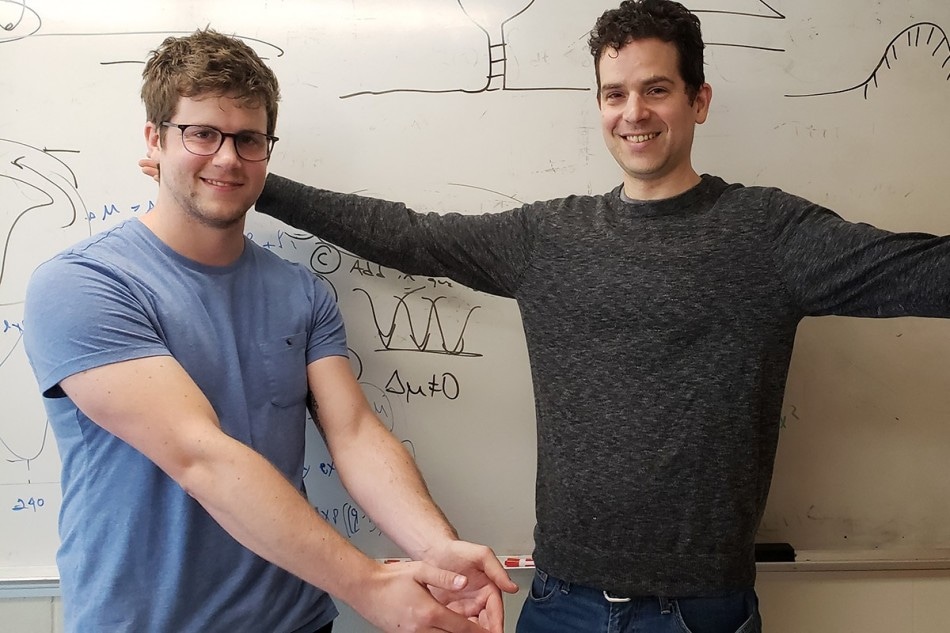May 23 2019
In every person, there are trillions of very small molecular nanomachines carrying out various essential tasks to keep the person alive.
 SFU physics graduate student Steven Large, left, and professor David Sivak model the folded and unfolded states of a DNA hairpin. (Image credit: SFU)
SFU physics graduate student Steven Large, left, and professor David Sivak model the folded and unfolded states of a DNA hairpin. (Image credit: SFU)
In an advanced study, a group of researchers, under the guidance of SFU physics professor David Sivak, has come up with an approach, for the first time, to manipulate these machines to increase the efficiency and to save energy. The discovery is likely to have implications in various fields, including the development of more efficient computer chips and solar cells for producing energy.
Nanomachines are small, extremely small—indeed, with a width of few billionths of a meter. They could perform complex tasks at high speed, which includes building and breaking down molecules, moving materials around a cell, and processing and expressing genetic information.
According to Sivak, since these tasks can be performed by the machines with the consumption of considerably less energy, a theory predicting the energetic efficiency provides an understanding of how these microscopic machines operate and what goes wrong when they crack.
In the laboratory, Sivak’s experimental coworkers have manipulated a DNA hairpin, the folding and unfolding of which is similar to the mechanical motion of more complicated molecular machines. Sivak’s theory predicted that they discovered the occurrence of high efficiency and reduced energy loss when they pulled the hairpin rapidly during folding but slowly during the verge of unfolding.
Steven Large, an SFU physics graduate student and co-first author of the study, stated that DNA hairpins (and nanomachines) are very small and floppy and that they are constantly pushed by strong collisions with surrounding molecules.
“Letting the jostling unfold the hairpin for you is an energy and time saver,” commented Large.
Sivak considers that the next step is to use the theory to understand how to steer a molecular machine through its operational cycle by reducing the energy required to perform the action.
Therefore, what is the advantage of making nanomachines more efficient? Sivak reported that prospective applications could be groundbreaking in various areas.
“Uses could include designing more efficient computer chips and computer memory (reducing power requirements and the heat they emit), making better renewable energy materials for processes like artificial photosynthesis (increasing the energy harvested from the Sun) and improving the autonomy of biomolecular machines for biotech applications like drug delivery.”
The study has been published in Proceedings of the National Academy of Sciences.